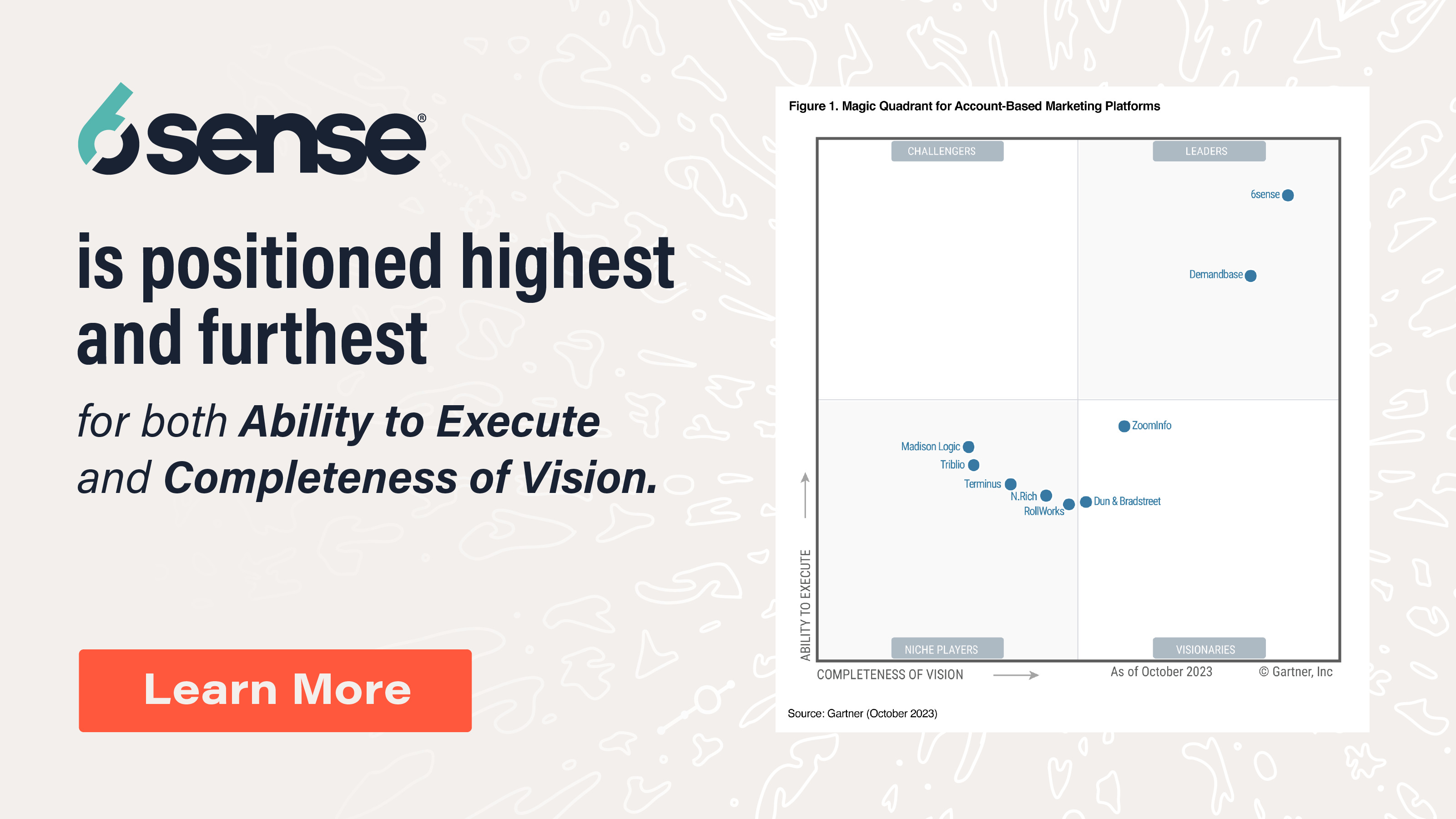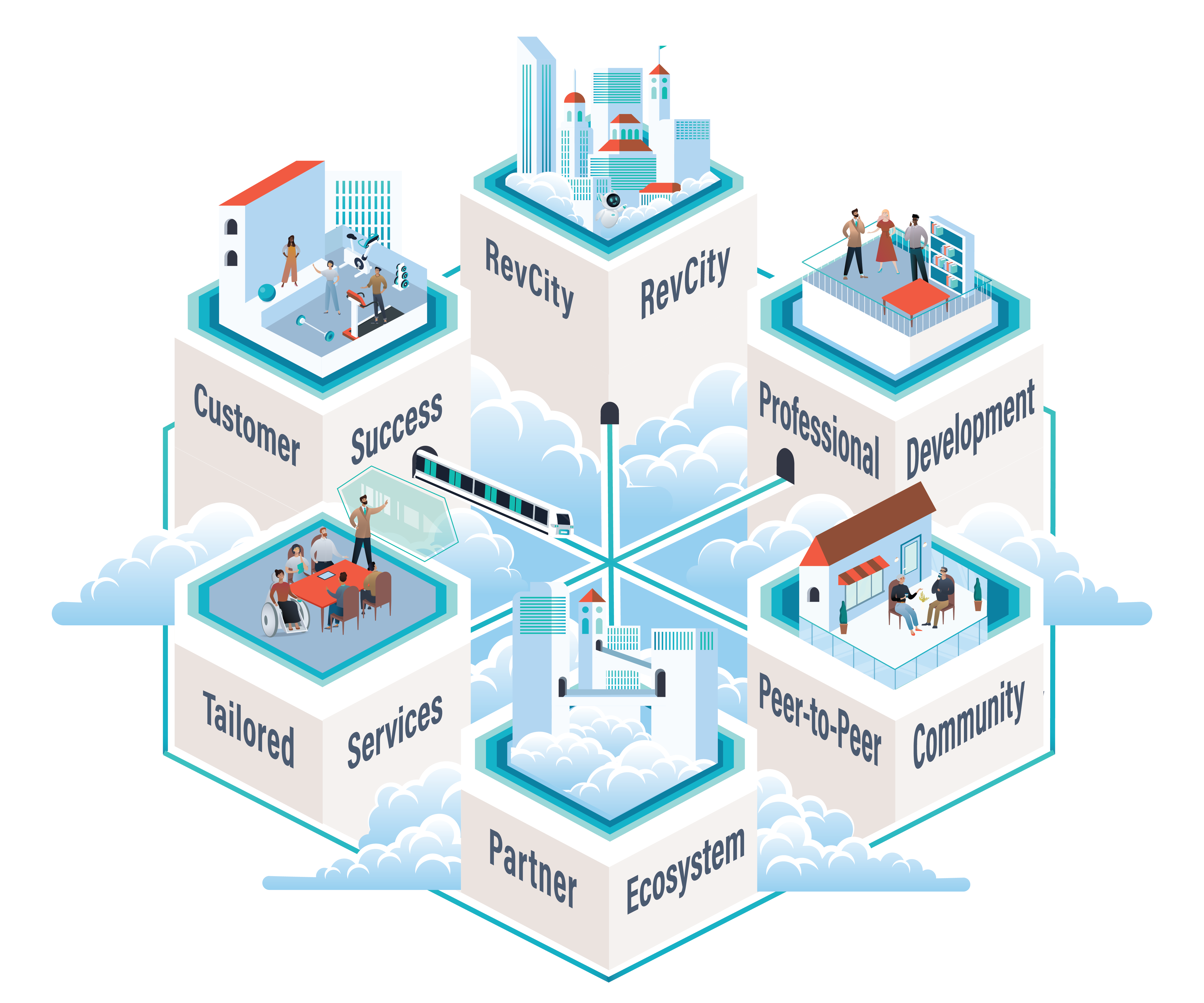For nearly 50 years, psychographic data has empowered marketing and sales teams to carve out inch-perfect strategies that target highly specific audiences based on psychological factors.
Put another way, companies use psychographic data to generate revenue by:
- Finding out what’s emotionally important to folks
- And catering to those needs through highly relevant, persuasive messaging
Psychographics originated within consumer behavior research, but modern B2B revenue teams are getting in on the action, savvily using psychographic data to personalize engagement among their target accounts’ employees, key personnel, and members of management.
This practice isn’t just for deep-pocketed Fortune 50 companies. Your organization can also integrate psychographic data into its strategies to effectively persuade buyers.
What is Psychographic Segmentation?
Psychographics segmentation differs based on whether you are considering a B2C or a B2B context.
For B2C, psychographics are used to identify consumer preferences and lifestyles. For example, Nike might focus on people who are avid runners, who recently purchased a gym membership, participate in sports, or buy collectible sneakers.
B2B psychographic segmentation focuses on the needs of different types of businesses and how those businesses make decisions.
Regardless of B2C vs B2B context, proper segmentation can help you deliver messaging that is aligned with your prospects’ motivations, leading to stronger conversion rates and more sales.
B2C Psychographic Variables With Examples
When setting out to use psychographic data to segment your target audience, the most important step is to choose the right attributes — as in, the attributes and variables that will help you precisely predict your next customer.
The information that hails from these six psychological factors is especially important when performing psychographic segmentation:
1. Values and Attitudes
This often constitutes the ideals, mannerisms, and self expression that arise as a result of the consumer’s personal lifestyle or accomplishments. They’re more likely to purchase your product or service when your sales strategies reflect their own values and attitudes.
2. Personality Traits
A consumer’s personality traits is another crucial parameter when ideating and designing a campaign. People tend to associate themselves closely to deep-seated personal inclinations such as patience, sense of humor, etc. These facets may be defined using models such as “The Big Five Personality Traits”:
- Openness to experience
- Conscientiousness
- Extraversion
- Agreeability
- Neuroticism
Engaging a consumer based on their personality can go a long way, allowing your solution to resonate with the intended audience.
3. Lifestyle
A consumer’s lifestyle also influences their world views (and receptiveness to messages that complement it). People tend to associate themselves with different categorical personas that may arise from a mixture of worldly identifications like:
- Profession
- Hobbies
- Role models
- And more
For instance, a consumer may identify themselves as adventurers, sport fans, parents, corporates, or socialites.
4. Interests and Activities
Consumers can also be segmented based on shared interests and activities. Individuals tend to develop strong associations with their personal interests, which can be leveraged by savvy marketers to craft resonant outreach.
5. Opinions
A consumer’s personal opinions also play a key role in shaping how they see themselves — but marketers must pay close attention to privacy laws if using this data to shape their marketing. Political, religious, and ideological opinions are all considered sensitive personal data under GDPR regulations.
B2B Psychographic Variables and Examples
The focus in B2B psychographics centers on accounts rather than individuals.
Organizational psychographics can predict the innovativeness of an organization especially within the context of contemporary multi-person B2B buying teams. In fact, studies indicate that psychographics play an instrumental role within larger buying teams since buyers often have shared values and are in regular communication with each other.
And while factors such as quality, price and service will always remain important to buying teams, additional research suggests that other factors can be equally influential in purchasing decisions.
Examples:
-
Innovation Orientation
- Some businesses are early adopters of new technologies and solutions. Companies that value innovation and are willing to invest in cutting-edge products or services.
- Conservative businesses that prefer tried-and-tested solutions with a long track record.
-
Cost Sensitivity
- Budget-conscious organizations that prioritize cost savings and efficiency.
- Companies willing to invest more for premium products or services that offer significant value.
-
Environmental and Social Responsibility:
- Businesses that prioritize sustainability and seek suppliers with eco-friendly practices.
- Companies that align with socially responsible initiatives and prefer working with like-minded partners.
-
Collaborative Culture
- Companies that value partnerships and long-term relationships over transactional interactions.
- Businesses that prefer collaborative solutions and open communication with their suppliers.
-
Corporate Culture
- Organizations with a strong corporate culture that values employee well-being and satisfaction.
- Companies that prioritize a nimbleness over structure, or vice versa.
-
Strategic Focus
- Businesses with a focus on short-term goals and quick returns.
- Companies with a long-term strategic vision that values partnerships contributing to their overall mission.
-
Customer-Centric Approach:
- Organizations that prioritize customer experience and satisfaction in their decision-making.
- Companies that focus on the end-user and seek suppliers who share a customer-centric mindset.
-
Regulatory Compliance:
- Businesses in highly regulated industries that prioritize suppliers with a strong commitment to compliance.
- Companies in less regulated industries that may prioritize other factors over strict adherence to regulations.
By gaining an understanding of the motives that drive an account’s decision-making, marketers are better equipped to create a more personalized and profitable selling strategy.
Technology and Modern Psychographics
Buyers conduct research on the internet, often on third-party websites such as industry publications, blogs, social networks and product review websites. Billions of interactions, data points and other useful user information about website visitors are accumulated every day across the web.
Historically, sellers have been unable to track this behavioral data, leaving this invaluable activity within a longstanding blind spot we call the Dark Funnel™.
However, the AI-powered capabilities of world-class account engagement platforms (like 6sense) can tie those buying intent signals to specific accounts in ways that can reveal which companies are poised to buy, how soon, and the topics that are animating their decision-making processes.
Conducting Psychographic Segmentation
Psychographic segmentation can be conducted using a variety of methods, including:
- Profiling likely participants
- Web- and field-based customer service applications
- Collecting data from various user platforms and social media
- Pricing/value and price sensitivity studies
- Surveying and interviewing customers
- Creating online communities of customers and focus groups
- And more
The downside to these activities is that they consume lots of time, effort, and resources. Further, the resulting qualitative data may be hard to comprehend considering that every buyer is unique. Worse still, if the psychographic segmentation isn’t conducted in an appropriate way, it could lead to inaccurate results.
As a result, most businesses delegate these tasks to third-party agencies which often costs a lot of money.
However, solutions like 6sense and its industry-leading Sales Intelligence capabilities eliminate nearly all of the effort associated with collecting and analyzing psychographic data, and combine it with other market segmentation methods such as technographics and firmographics.
This empowers your revenue team to predict your next customer with greater accuracy.
The most efficient, cost-effective, time and resource saving way to gather sales intelligence today is by using all-encompassing sales intelligence tools like 6sense that analyze the right variables for your business — and delivering precisely targeted accounts that are in-market to purchase your solution right now.
Contact us for more information, or schedule a demo today.






